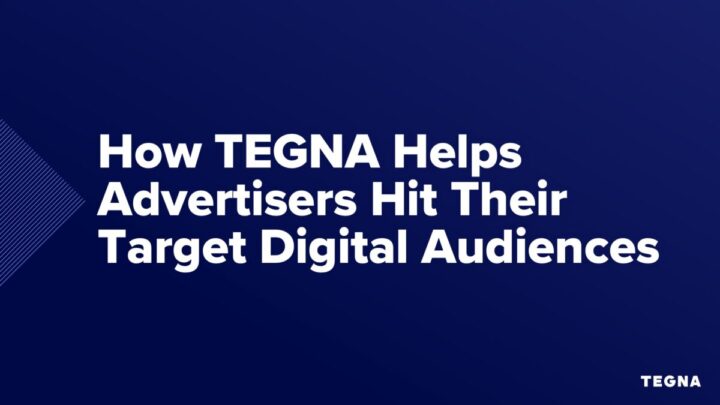Creating a Successful Hospital Marketing Plan
Are you creating a hospital marketing plan? Here are a few key strategies to consider. Learn more about target markets, local advertising, differentiation, and more!

Creating a Successful Hospital Marketing Plan
On top of providing the very best medical care, TEGNA’s new e-book, Checking the Pulse of Today’s Healthcare Consumer, found that it’s critical that hospitals of all shapes and sizes understand healthcare consumers’ attitudes, expectations, behaviors, and pain points to bring in new and existing patients for essential healthcare services.
That makes a marketing plan critical. Good health outcomes abound when you effectively communicate how your hospital will meet and exceed patient expectations. Think of it this way: an effective marketing plan is a spoonful of sugar to help the medicine go down.
Here are our tips to help your hospital be seen, build brand trust, develop attractive creative, and position your healthcare system as the vital choice in quality care with a strong hospital marketing plan.
What is a Hospital Marketing Plan?
Advertising your hospital is about reaching the right audience at the right time and place. To do so effectively, you can’t just take shots in the dark and hope it works. That’s why creating a marketing plan is critical. Simply put, a healthcare marketing plan details the organization’s strategic outreach and communications to attract, guide, and engage consumers seeking healthcare services.
You’ll also want to create a media plan to determine which channels are best suited for your company. Whether you’re advertising locally or nationally, finding the right distribution channels for your advertisements is important.
Unique to each brand, an effective hospital marketing plan usually consists of the following:
- Brand Identity: Effective marketing plans often include a SWOT Analysis (strengths, weaknesses, opportunities, threats) to help identify brand goals.
- Brand Goals and Objectives: SMART goals (Specific, Measurable, Achievable, Realistic, Time-based) often include treating new or loyal patients, improving patient education, raising awareness, building trust, and increasing donations.
- Target Audiences: A persona profile or demographics of your ideal customer/patient.
- Research and Data: Healthcare marketers rely on data storytelling to reach their target audience more than any other industry.
- Media Plan and Marketing Platforms: An outline of the who, what, when, where, why, and how your brand intends to reach its target audience, often including a budget.
- Measures of Success: An effective healthcare marketing plan means success for your medical practice. What metrics will you use to gauge if your marketing moves the needle?
What are the Advantages of Creating a Hospital Marketing Plan?
Every healthcare provider will have unique challenges and goals, from education and awareness to staying competitive and recruiting. An effective marketing plan has plenty of health benefits for hospitals nationwide.
Drive Brand Awareness: A hospital can’t operate without patients – and patients need to know about your hospital so they can be treated there. With the right frequency, reach, and creativity, your hospital will be top of mind when seeking healthcare.
Increase Fundraising Efforts: An effective campaign will drive brand awareness and bring in monetary ROI in terms, and it can also help those in serious need. For example, most of St. Jude’s operating funds are raised by private donations, making it possible for affected families never to receive a treatment bill. In teaming up with TEGNA’s ABC10 in Sacramento, the marketing plan helped to raise $755,500 for St. Jude Research through promotion via news stories, event announcements, and educational segments.
How Do You Write a Hospital Marketing Plan?
Any good plan starts with an outline, and Hubspot has great templates to help you get started. The outline should consist of a business summary, SWOT analysis, SMART brand goals and objectives, target audience personas and demographics, competitive analysis, market strategy, budget, marketing channels, and how to plan to measure success.
Components of a Hospital Marketing Plan
Brand Goals & Objectives: What is your brand trying to achieve? Treat new patients? Educate audiences on a particular disease or condition? Increase donations?
Persona Development: Who is most likely to use your services? Is it mothers with children who have a tendency to fall off the monkey bars? Is it seniors looking to be proactive with heart health? Or is it the millennial who believes mental health is just as important as physical health? Creating persona profiles is a great way to help understand your target audience and the best way to reach them with advertising.
Research & Justifications: Every good marketing plan is backed by data and research, which informs the strategy behind the plan. For example, TEGNA’s new e-book, Checking the Pulse of Today’s Healthcare Consumer, shows consumers are frustrated with a lack of transparency surrounding costs. This indicates that a good marketing campaign will communicate how the brand alleviates this pain point.
Marketing Channels: What platforms will best reach your target audience? Is it TV advertising? What about Streaming TV platforms? Local news and lifestyle show appearances? A one-size-fits-all approach won’t work here, and a variety of effective advertising platforms will be revealed in the research process. You’ll also want to create a media plan to
Measurement: When treating patients, you follow up to see the results. If they feel better, you know the treatment worked. If they don’t, you alter the treatment plan. The same goes for marketing. How will you measure results? What do you consider a successful campaign? If your goal is patient education, will you measure that in impressions or website traffic? Knowing which platform or creative delivers the best results means you can continually optimize your campaign, leading to even better outcomes.
5 Tips for Creating Your Hospital Marketing Plan
Every healthcare provider will have unique challenges and goals. Still, there are a few universal findings from Checking the Pulse of Today’s Healthcare Consumer that can benefit a hospital’s marketing and advertising messages:
1. Understand Your Target Market
When designing a hospital marketing plan, it should match the needs of your target audience. For example, consider the following:
- Encourage the return to in-person care. Reassure consumers with the benefits and perks of the in-office experience. For example, you can use TV’s visual medium to show off visual displays with predicted – and short – wait times and elevate awareness of how this tech will improve the overall patient experience.
- Increase transparency around costs to help avoid sticker shock. Explore payment plan options to help consumers better afford costly procedures or highlight a sliding scale for those without insurance.
2. Differentiate Your Hospital
Less than half of patients understand what differentiates the hospitals in their area. Therefore, hospitals have a major opportunity to highlight competitive differentiation using cross-platform video storytelling. Hospitals should consider lifestyle integrations with trusted TV partners to help contextualize the hospital’s critical role in its community.
3. Leverage Local Advertising
Local news channels are vital for communities to receive patient education, as 55% of consumers learn about the latest health information from their local news. Additionally, 60% of consumers who get health information from local news trust brands that advertise in its content. These stations have earned the trust of their viewers and can amplifya hospital’s message at scale.
For example, Methodist Healthcare in San Antonio partnered with KENS5 to help get the word out about the regional healthcare network’s community initiatives – and the campaign was a success. Click here to watch as Mike Malo, former VP of Marketing for Methodist Healthcare, tells us more about his relationship with TEGNA’s KENS5.
4. Utilize Storytelling
When audiences become captivated and emotionally connected to an ad, it improves brand awareness and ad recall and increases purchase intent. Before the pandemic, creative that performed well told a patient’s story. During the pandemic, the best-performing ads focused on health and wellness – things like how to keep yourself safe. In 2023, we’re seeing that viewers want to hear a caregiver’s perspective as much as they want to hear the patient’s.
5. Define Key Metrics & Measure Results
Gartner reveals that only 53% of decisions are influenced by marketing analytics. Although marketers strive to be data-driven, cognitive bias and data management prevent obstacles. A marketing attribution tool – such as TEGNA Attribution – can help companies overcome some of these hurdles by providing information related to campaigns in a clear and digestible format. With marketing measurement, teams can determine which campaigns were successful.
Learn How TEGNA Can Support Hospital Marketing Plans
Large audiences, trustworthy content to align with, high recall, emotional connections, extended reach, and opportunities to create more than just a regular commercial are just a few of the factors that make TV advertising so effective.
Advertising, especially alongside trusted local news broadcasts, reaffirms a brand’s place in the community and showcases that your brand can also be trusted with the right amount of frequency and exposure to target audiences. By aligning with the unique content opportunities that TEGNA offers, your healthcare brand has an opportunity to be the talk of the town.
From media planning, reaching target audiences, developing creative, and being your brand’s champion, TEGNA delivers proven results through simplified multi-platform advertising solutions that connect your business to the audiences that matter most via Broadcast TV, OTT Advertising, and Digital Solutions, including Targeted Display and Retargeting, as well as campaign measurement and optimization with TEGNA Attribution. TEGNA stations also offer a variety of customizable content sponsorships, as illustrated above.
Let’s get in touch if you’re thinking of amplifying your hospital brand’s TV efforts or joining TEGNA affiliates to serve the greater good of our communities.
Frequently Asked Questions
What Is Healthcare Marketing?
A healthcare marketing plan details the organization’s strategic outreach and communications to attract, guide, and engage consumers seeking healthcare services.
Why Is Healthcare Marketing Important?
Not only will an effective healthcare marketing campaign attract, guide, and engage consumers seeking healthcare services, but it can also help those in serious need by helping to increase donations to specific causes and foundations.
What is the Hospital Marketing Mix?
Generally, a marketing mix looks to communicate the four Ps of marketing: product, price, place, and promotion. Healthcare, however, adds three more elements to the mix: packaging, positioning, and people.
What are Some Healthcare Marketing Strategies?
A healthcare marketing plan details the organization’s strategic outreach and communications to attract, guide, and engage consumers seeking healthcare services. A marketing mix can include a variety of tactics, including, but not limited to, TV advertising, Streaming TV advertising, digital ads, radio, email marketing, social media, and print media.






















